Trigonometric Function Values at 60° (π/3)
An angle of π/3 radians (pi over three) is equivalent to 60°.
What are the sine and cosine of π/3 radians? And what about the tangent and cotangent?
Let’s explore the trigonometric values for an angle of π/3 by using some geometric observations.
The unit circle has a radius of one, r = 1.
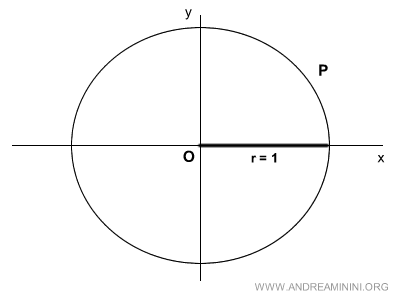
We draw a segment OP, forming an angle of π/3 radians from the x-axis.
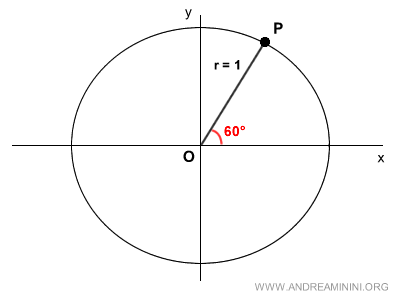
We then project the coordinates of point P onto the y-axis and x-axis.
This yields two points, A and B, on the Cartesian plane.
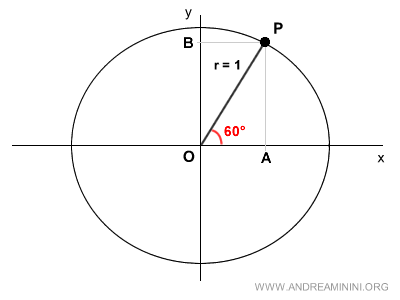
Connecting points O, P, and A creates a right triangle with a 90° angle (π/2) and two complementary angles: π/3 (60°) and π/6 (30°).
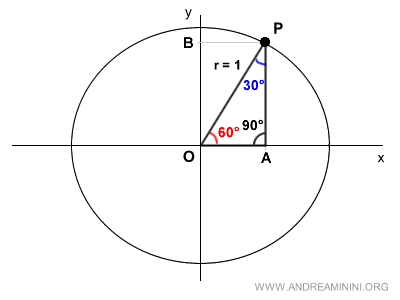
Next, we consider point C on the horizontal axis.
By drawing segment PC, we form another right triangle OPC with identical angles: a right angle (π/2) and two complementary angles of π/3 (60°) and π/6 (30°).
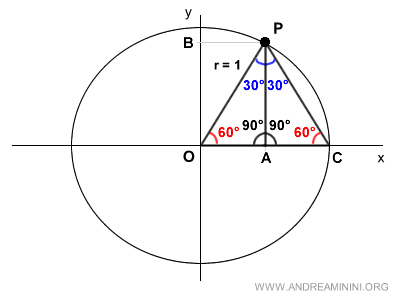
Connecting points O, P, and C forms a triangle where all the angles are π/3 (60°).
This means the sides of triangle OPC are congruent, making OP = OC = PC.
Since the length of segment OP is equal to the radius, r = 1, all sides are equal to one: OP = OC = PC = 1.
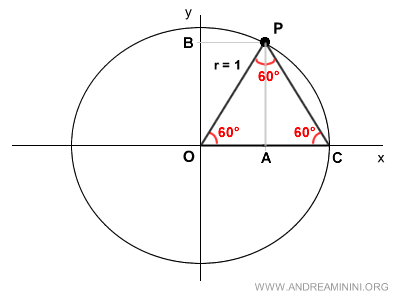
Segment OA is exactly half the length of segment OC, which is 1.
$$ \overline{OA} = \frac{1}{2} \cdot \overline{OC} $$
$$ \overline{OA} = \frac{1}{2} \cdot 1 $$
$$ \overline{OA} = \frac{1}{2} $$
This tells us the length of OA, which represents the cosine of 60° (π/3).
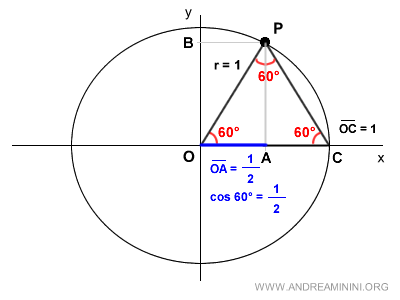
Thus, we have found the cosine of the angle π/3.
$$ \cos \frac{π}{3} = \frac{1}{2} $$
Returning to the initial right triangle OPA, we now know both the hypotenuse OP = 1 and the cosine OA = 1/2.
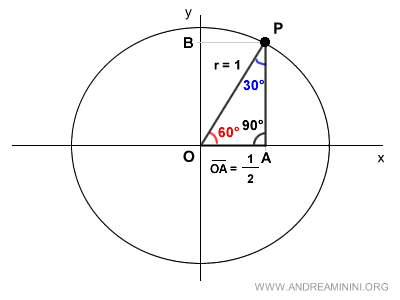
Using the Pythagorean theorem, we calculate the length of segment PA.
$$ \overline{PA} = \sqrt{ \overline{OP}^2 - \overline{OA}^2 } $$
$$ \overline{PA} = \sqrt{ 1^2 - \left( \frac{1}{2} \right)^2 } $$
$$ \overline{PA} = \sqrt{ 1 - \frac{1}{4} } $$
$$ \overline{PA} = \sqrt{ \frac{4 - 1}{4} } $$
$$ \overline{PA} = \sqrt{ \frac{3}{4} } $$
$$ \overline{PA} = \frac{\sqrt{3}}{2} $$
We have now calculated the length of PA, which is the sine of 60° (π/3).
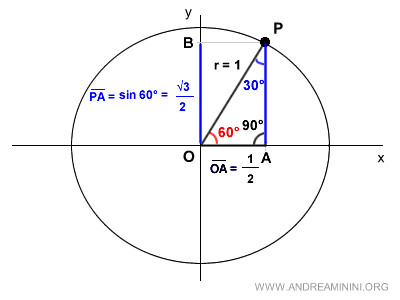
So, the sine of the angle π/3 is
$$ \sin \frac{π}{3} = \frac{\sqrt{3}}{2} $$
With both the sine and cosine values determined, we can now find the tangent of π/3.
$$ \tan \frac{π}{3} = \frac{ \sin \frac{π}{3} }{ \cos \frac{π}{3} } $$
$$ \tan \frac{π}{3} = \frac{ \frac{\sqrt{3}}{2} }{ \frac{1}{2} } $$
$$ \tan \frac{π}{3} = \frac{\sqrt{3}}{2} \cdot 2 $$
$$ \tan \frac{π}{3} = \sqrt{3} $$
Next, we calculate the cotangent of π/3.
$$ \cot \frac{π}{3} = \frac{ \cos \frac{π}{3} }{ \sin \frac{π}{3} } $$
$$ \cot \frac{π}{3} = \frac{ \frac{1}{2} }{ \frac{\sqrt{3}}{2} } $$
$$ \cot \frac{π}{3} = \frac{1}{2} \cdot \frac{2}{\sqrt{3}} $$
$$ \cot \frac{π}{3} = \frac{1}{\sqrt{3}} $$
We then multiply the numerator and denominator by √3:
$$ \cot \frac{π}{3} = \frac{1}{\sqrt{3}} \cdot \frac{ \sqrt{3} }{ \sqrt{3} } $$
$$ \cot \frac{π}{3} = \frac{\sqrt{3}}{3} $$
Through these steps, we’ve calculated the trigonometric function values for a 60° angle (π/3) using simple geometric principles.
And so forth.
